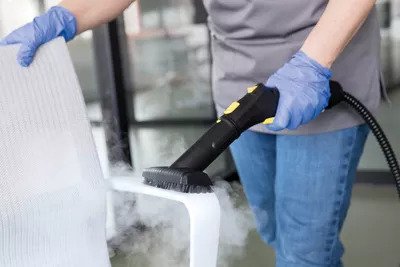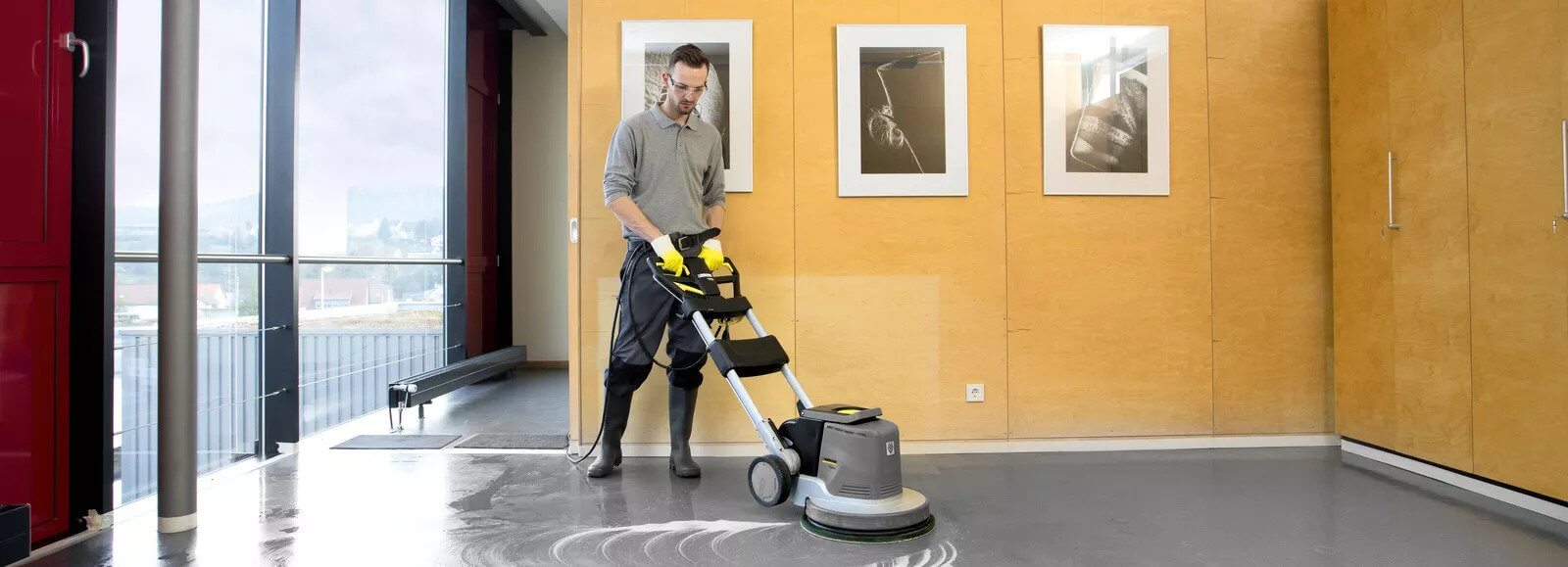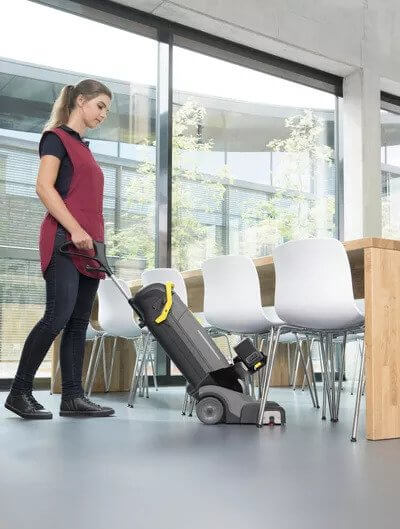OFFICES CLEANING
Office cleaning is a difficult task that involves balancing a number of competing demands. These priorities include time and cost constraints, cleaning outcomes, hygiene, and sustainability. Therefore, it’s critical to use cleaning techniques that are appropriate for the particular difficulty. In the future, dynamic cleaning will take the role of static cleaning more and more, especially with an eye on guaranteeing sustainability and hygienic conditions.
Principles of cleaning
- Clean from top to bottom
- Clean from back to front
- Clean from dry to wet
- Clean from clean to dirty
Surface

Surface cleaning helps to maintain the aesthetic appeal of a space, helps keep its value, and is crucial for preventing contact diseases. Wiping with a damp cloth and spray is a cleaning technique that is very effective for getting rid of loose or partially stuck dirt off desks, sideboards, or cable ducts. This technique achieves a high level of hygiene while saving time, cleaning supplies, and water. Either the cleaning agent is pre-dosed, eliminating costly and harmful overdose; or the cleaning agent is not pre-dosed. As an alternative, the cleaning solution can be sprayed three times straight onto the cloth, with the soaked side being used to clean. When removing tough dirt, moist wiping with a preconditioned cloth is the recommended technique.

Critical touchpoint treatment, or cleaning or sanitising crucial places of contact, is applied to frequently used surfaces. Disinfectant cleaners and disinfectants, which, depending on the version, can have a virucidal action against enveloped viruses, are available if contaminated surfaces have to be chemically cleansed.
Steam cleaners and steam vacuum cleaners are an efficient and time-saving way to ensure a proper level of hygiene and fight germs and viruses, depending on the type of dirt and nature of the material, and because of their high cleaning temperature. Depending on the type of machine, the steam emerges in very small drops at a temperature of about 100 °C and a pressure of up to 8 bar.

Floor

Scrubber driers are the best option for areas with hard flooring, such as corridors or tea kitchens, as they may be utilised more effectively and hygienically than traditional wet wiping. The instantaneous removal of contaminated water complements the enhanced cleaning performance and greatly lowers the risk of slipping. If the machine includes a steerable scrubber head that can be rotated, it will be simple for the user to manoeuvre around any impediments. A small scrubber dryer that can also clean under desks is ideal in offices with hard floors.

Typically, textile floor coverings are used in offices. Vacuuming rooms from the entrance, beginning at the edge, and always moving the nozzle backwards and forwards diagonally in a V-pattern over regions that need to be cleaned is advised for a thorough cleaning outcome. For tight spaces, a crevice nozzle should be used.
The use of battery-powered vacuum cleaners has proven to be appropriate because there are many individuals present during the day. Compared to traditional models, you have the following benefits: The need for cords to be marked with signs eliminates any tripping hazards, and there are no longer any repair costs associated with broken cords.
In order to clean while guaranteeing efficient resource usage, scrubber dryer settings such as suction power or water volume should be changeable to meet the specific purpose and level of dirt. In addition, battery-powered machines demand less work because a wider surface area can be cleaned without stopping to charge or replace the battery when the machine’s performance is adapted to the task. Straight strokes from the outside in are the finest technique to clean the region. Preliminary manual cleaning with mild wet wiping is advised for confined spaces and corners.
